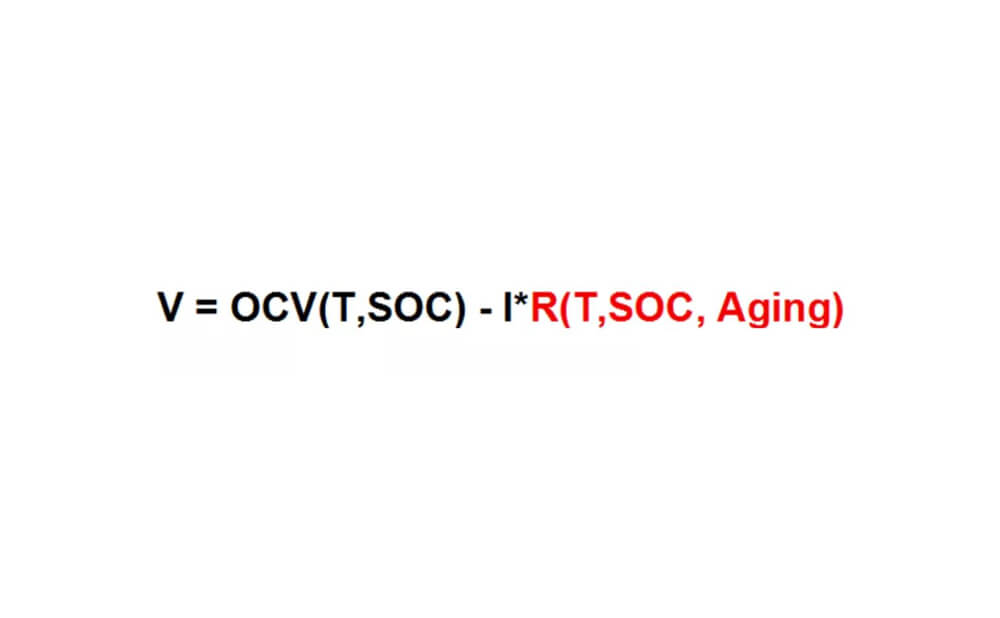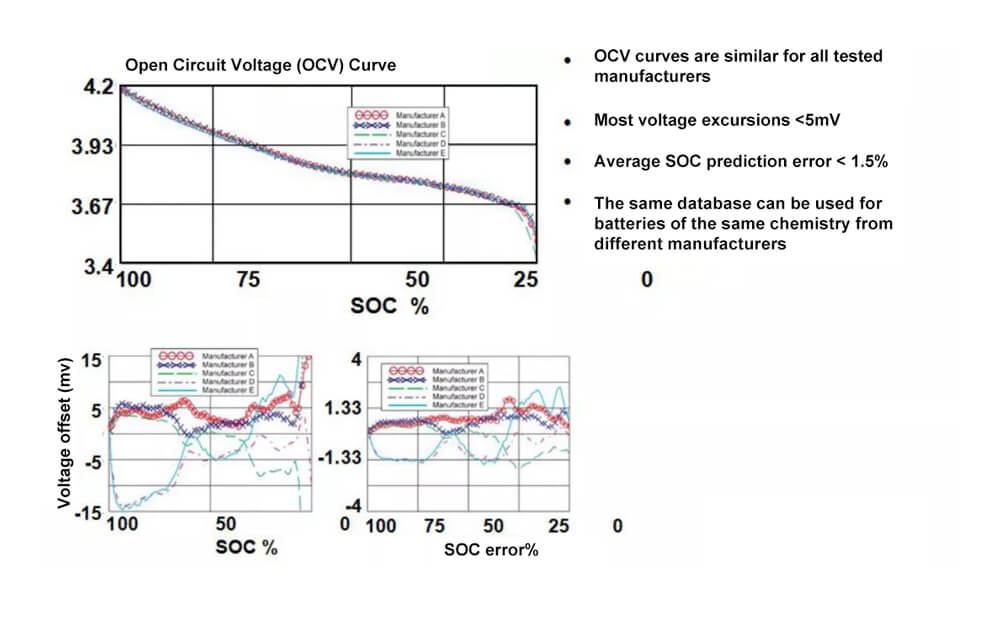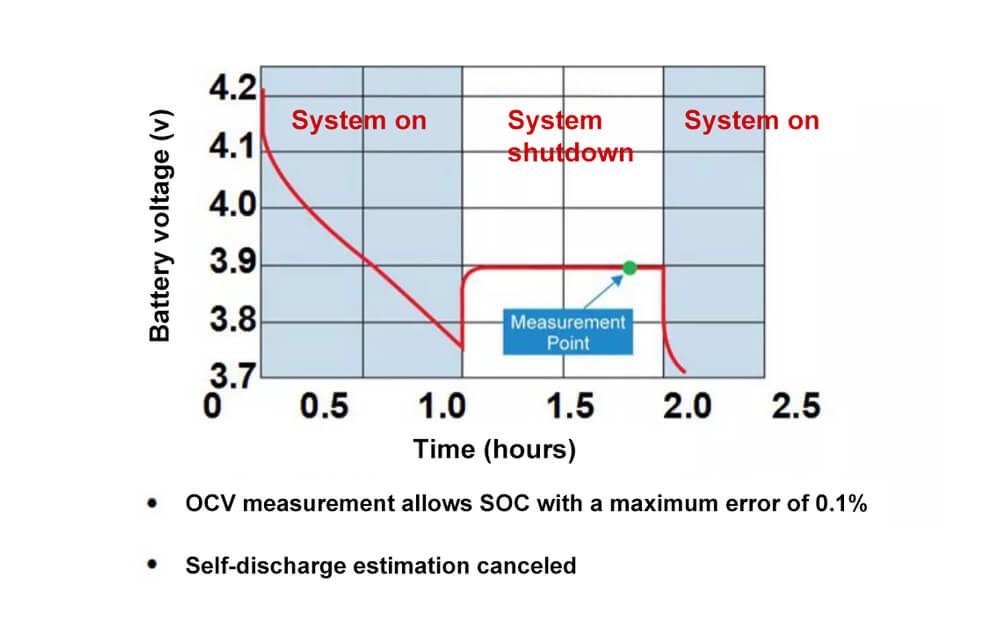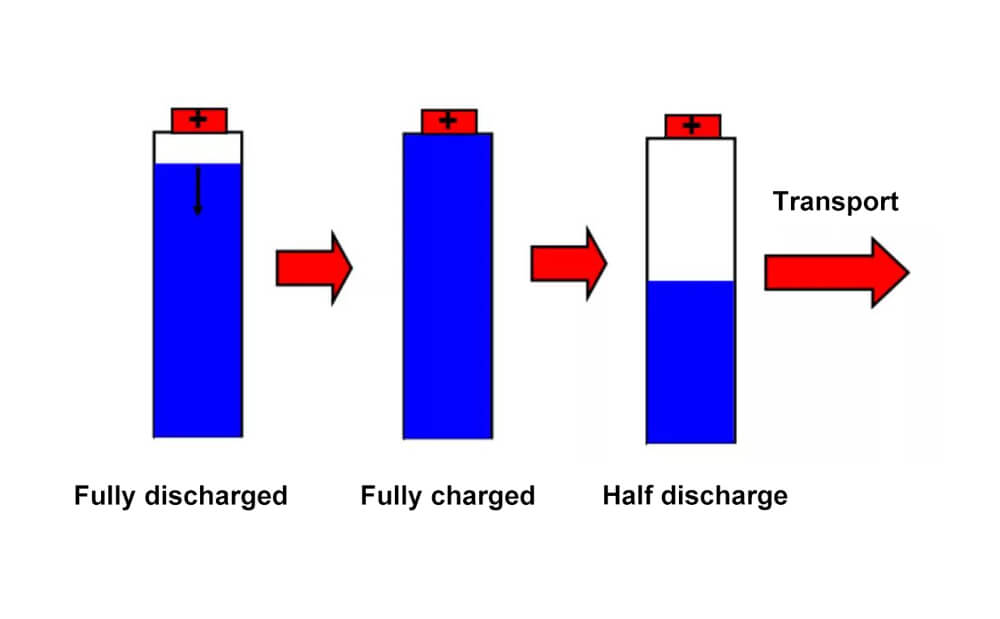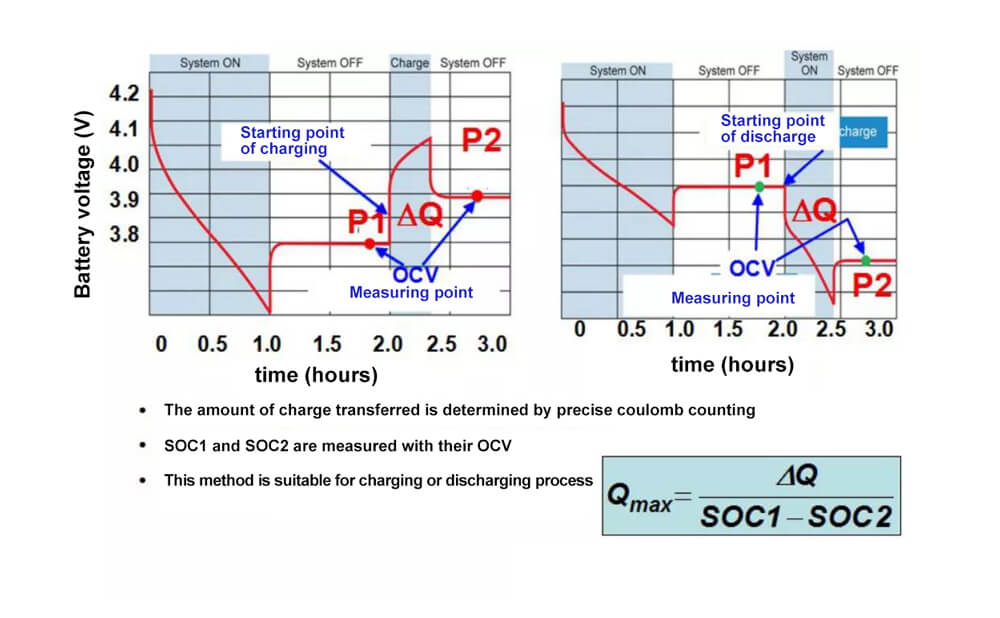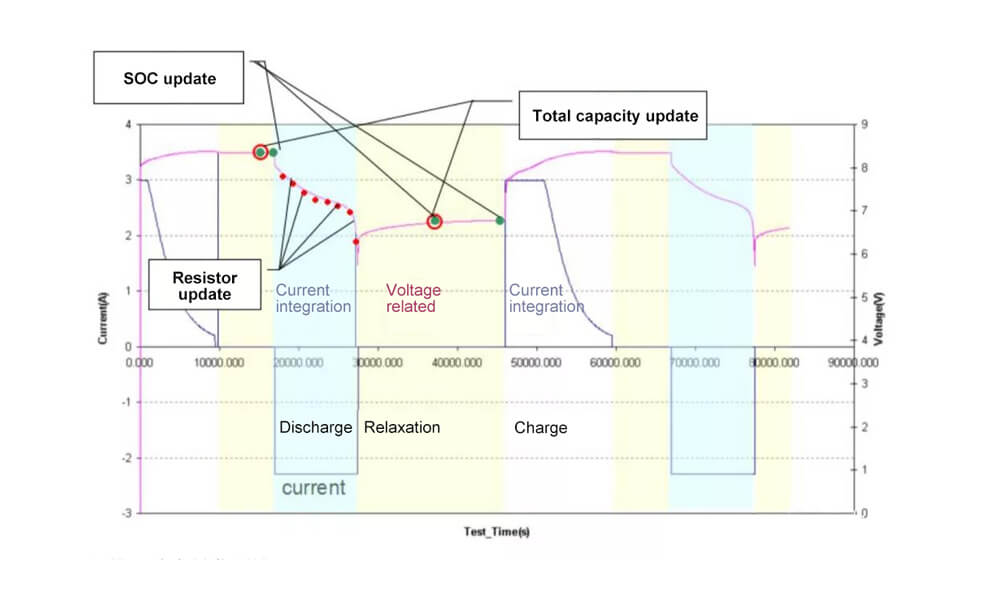Home » lithium ion battery knowledge » Advantages of impedance tracking technology
Advantages of impedance tracking technology
Let’s introduce TI’s power monitoring technology (we call it impedance tracking technology) and its advantages.
Power monitoring
– Voltage-based fuel gauge: Provides accurate monitoring under no-load conditions
– Coulomb counting based fuel gauge: Provides accurate monitoring under load conditions
– Combines the advantages of voltage-based and current-based monitoring methods
– Real-time impedance measurement
– Uses open circuit voltage and impedance information to calculate remaining operating time for a given average load condition.
I just mentioned that the voltage-based power monitoring technology can provide more accurate power monitoring under no-load conditions, and the coulomb counting-based power monitoring can provide accurate power monitoring when there is a load. Our impedance tracking technology actually integrates voltage and current. The advantages of method monitoring, why can it get the advantages of 2 methods?
Because it measures the impedance of the battery in real time, it does not find a formula for the battery impedance and then compensate for some factors. It finds a method to measure the impedance in real time. Because it is measured in real time, there is no need to go according to the model. to compensate for it.
In the case of knowing the battery impedance, the open circuit voltage and impedance information can be used to estimate how long the system or battery can provide for running time or how much capacity can be provided for system operation at a given current. This formula is a little more refined here,
That is to say, the terminal voltage of the battery is equal to the open-circuit voltage of the battery minus the voltage drop above the internal resistance. The voltage drop above the internal resistance is mainly caused by the internal resistance of the battery. The internal resistance is the temperature, the capacity percentage, and the age. 3 It is determined by several factors, but if you use a formula to express this internal resistance, it will be quite complicated and the effect is not ideal. Our approach is actually to measure the impedance in real time.
Comparison of curves
What is the basic idea of impedance measurement? During the actual use of the battery, the terminal voltage of the battery will change with many situations. As mentioned earlier, the terminal voltage of the battery may change with the size of the current. Of course, the terminal voltage of the battery will also change with the current. As the percentage of capacity changes,
Under the same percentage and the same current, the terminal voltage of the battery may also be related to the temperature and the aging degree of the battery, but this is only a superficial phenomenon we have seen.
In fact, more fundamentally speaking, the open circuit voltage curve inside the battery or the electromotive force of the battery is not so obvious compared with the influence of these external factors on it. You can find some common things. The batteries produced by different manufacturers are giving Under certain test conditions, such as at the same temperature, the error of this curve is very small.
This curve is the open circuit curve measured by a combination of batteries made by 5 battery manufacturers. You can see that these open circuit curves are basically the same, so they are the curves measured at the same temperature, because it is Open-circuit voltage, not to mention current, of course, its measurement process is quite cumbersome, because it needs to obtain the open-circuit curve in the state where the current is approximately 0, and its test process is relatively cumbersome,
From this curve, we can see that this curve basically does not change with different manufacturers. Because of different craftsmanship, there may be a relatively large change in impedance, but this open circuit voltage curve is basically the same for everyone. is consistent, most voltage offsets are less than 5mV, and the prediction error of SOC from this voltage is generally within %,
Therefore, once such a curve is found, the same curve can be used to calculate the batteries made by different battery cell suppliers. The calculation of this curve can know the open circuit voltage of the battery, and in turn can find out the capacity percentage of the battery. It is such a curve.
After knowing the battery capacity percentage, knowing the battery’s chemical capacity or full charge capacity, you can know how much mAh of power it has left, then you can calculate how long it will run, and the subsequent capacity percentage can be further calculated.
The following picture is an enlarged picture of the error. This error is in the entire discharge process. Here is a voltage error, including the influence of the measuring equipment. This error is between ±15mV. This error is probably in the capacity error, SOC The calculation error is within ±%, why?
Because the voltage error in this place is also related to the measurement accuracy of the instrument, after the measurement accuracy of the instrument is taken into account, the resulting capacity percentage error is within %.
How to measure OCV
Problems for traditional battery capacity learning
A lot of test equipment is required and a lot of time is spent.
It is possible that the user will never achieve a full discharge of the battery to learn the capacity.
Without learning, the monitoring error will increase by 1% for every 10 charges.
Learning Qmax without full discharge
Cooperation between points mode and related mode
Impedance Tracking Fuel Gauge
• Advantages
– Combines the strengths of the two gas monitoring methods based on voltage and coulomb counting
– Provides accurate monitoring at both low current (OCV) and high load currents
– Deprecated inaccurate self-discharge model (read with OCV)
– Provides very accurate fuel gauge for new and aged batteries
– Capacity learning without full charge and full discharge

